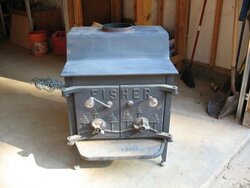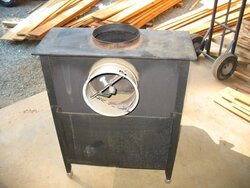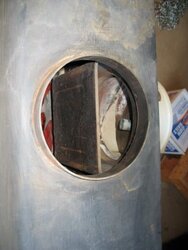Todd,
Since nshif is satisfied then we are not “hijacking” his thread so will now address your questions & ask some for your consideration.
I have a similar meter and I get similar readings on the end grains as you.
Then you have a Delmhorst? What model is your meter?
But when I cut a piece in half and take an inside reading, it jumps up to anywhere between 15-25% depending on type and size of firewood.
How long has the butt end been exposed to the un-shaded sun when you take that inside reading of the round?
What size is the round?
Has the wood been fully protected from wind driven rain for at
least two years?
Is there a 6 mil plastic vapor barrier under your pallets / timbers / blocks etc that the wood sits on?
So, do you average an inside/outside reading or go with the wetter inside reading.
No, when mine are 2 years the middle is also 6%.
Again, please understand that I do not have the “ES 26 slide hammer“ Delmhorst states is
necessary to accurately measure wood thicker than 6/4. To be sure that others that read our posts understand this point I will state what is obvious to you since you are familiar with a moisture meter.
The 2 probes on my meter are 5/16”, so when stuck into wood they test
only the mc between the 2 pins at a depth of
only 5/16“.
I burn mostly splits that average 22-½” L x 4-½” W x 4-½” D. I just went out & read one that was put up in Feb `06. The wood is red oak. The sun end read 6%, the rear 10%, & the center 12-15%. In the 24’ x 7’ front row of my wood shed there were a couple rounds but their at the bottom of the pile in the center. There is another row of wood directly behind the glass front row so I’d have to mine the second & first rows in order to get those rounds out to split & read. Sorry. Will pm you the readings when I get to those rounds sometime this winter (2006-07).
I don’t have full sun exposure, so I’m trying to get a couple years ahead on firewood to make sure it’s dry as it can be.
Good plan! Get as much sun as possible, keep the wood as dry as possible, & you will also have less creosote.
Think back to your biology class & recall how the petals on a flower were sustained with moisture from the soil. The same principle applies to the leaves on trees. The sun is the engine that causes the sap to rise in the tree via capillary action to the leaves. It is that engine that draws the moisture out when the cut end faces the un-shaded sun.
The explanation that the sap returns to the roots in the winter is
wrong. What happens is that the temp is too cold to allow the sap to freely flow, so the tree sheds its leaves & caps off the hole left with a bud that in turn becomes a leaf in the spring. Hardwood sap is thicker than softwood. That is why there is no hardwood in the upper north. But @ the artic circle the temp becomes too cold for even soft wood to grow.
Good luck with it,
Dave





